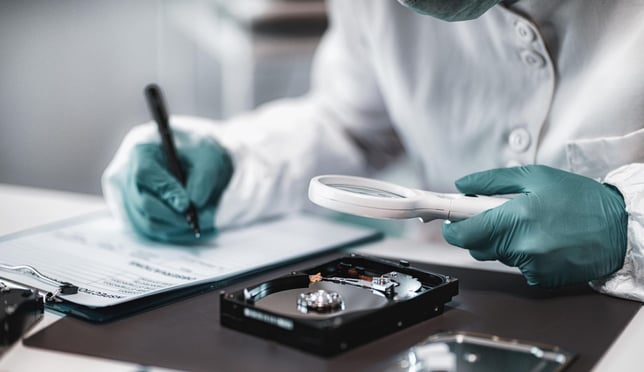Exploring X-Ray News from Around the World
X-ray technology has come a long way since its discovery in 1895 by Wilhelm Röntgen. Today, it plays an essential role in numerous fields, from healthcare to security, and even forensic investigations. In this post, we will explore some of the most exciting and innovative applications of x-ray technology happening across the globe. From breakthrough research to novel uses in different industries, we will take a look at how x-rays are shaping the world.
2/27/20254 min read


1. Cutting-Edge Medical Applications
X-ray technology has revolutionized healthcare, but its applications continue to expand. Recently, there have been several developments in the field of medical imaging that could change the way doctors diagnose and treat patients.
Portable X-Ray Devices: Transforming Rural Healthcare in Africa
In many parts of Africa, access to medical imaging is limited due to a lack of infrastructure and resources. However, a new wave of portable x-ray devices is helping to bridge that gap. These devices are lightweight, cost-effective, and can be used in remote areas, allowing healthcare workers to quickly diagnose conditions like pneumonia, tuberculosis, and even fractures. In rural areas where access to medical specialists is limited, this portable technology is providing life-saving diagnostic capabilities.
AI and X-Ray Technology: Enhancing Diagnostic Accuracy
Around the world, researchers are exploring ways to integrate artificial intelligence (AI) with x-ray imaging. AI algorithms can analyze x-ray images much faster and more accurately than humans, identifying potential health issues such as tumors, fractures, and infections. In China, for example, AI is being used to assist radiologists in detecting lung cancer and other diseases. As AI continues to improve, it holds the potential to revolutionize diagnostics, making them faster and more accurate.
2. X-Rays in Forensics: Solving Crimes and Uncovering Hidden Evidence
X-ray technology isn't just limited to healthcare—it's also being used to solve crimes. Forensic scientists around the world are utilizing x-rays to uncover hidden evidence in criminal investigations.
X-Ray Imaging of Ancient Artifacts
In Europe, researchers have been using x-ray technology to investigate ancient artifacts without damaging them. In museums across the continent, x-rays are helping scientists uncover the secrets of ancient objects such as sculptures, pottery, and jewelry. For example, x-ray technology was recently used to examine an ancient Egyptian mummy, revealing intricate details about its construction and the embalming process that were previously unknown.
X-Ray Forensics in the United States
In the U.S., x-ray technology has been used in forensic investigations to uncover hidden materials in packages, as well as to analyze bones and other evidence in criminal cases. A recent example involves the use of x-ray to examine the remains of a murder victim, revealing key details that helped law enforcement solve the case. X-ray imaging is increasingly becoming an essential tool for forensic experts, enabling them to discover critical evidence without having to physically interact with the object.
3. X-Rays in Security: Innovations in Airport and Border Control
X-ray scanners are a staple of modern airport security, but recent advancements in this technology are making air travel even safer.
Next-Generation X-Ray Machines: Enhancing Security at Airports
Across the globe, airports are investing in next-generation x-ray machines that offer higher resolution and faster scanning capabilities. These machines are more effective at detecting concealed objects, such as weapons and explosives, and can create more detailed 3D images of baggage. In addition, new systems use artificial intelligence to assist security officers in analyzing suspicious items, further improving the speed and accuracy of airport screenings.
X-Ray and Border Control in Asia
X-ray technology is also being utilized in border control stations around the world to scan vehicles and cargo. In countries like India, China, and Thailand, x-ray scanners are used to inspect goods and vehicles entering the country. This helps customs officials detect smuggling and contraband without having to manually search every vehicle, making the process faster and more efficient.
4. New Research on X-Ray Technology: Pushing the Boundaries
As with any technology, x-rays continue to evolve, and new research is constantly pushing the boundaries of what’s possible. Some of the most exciting areas of research today include:
X-Ray Vision in Space
In Japan, scientists are working on an innovative project that uses x-ray imaging to study cosmic phenomena. By developing specialized x-ray telescopes, researchers are aiming to explore deep space and examine the behavior of distant stars and galaxies. This research could provide groundbreaking insights into the nature of the universe, and help us understand phenomena like black holes and neutron stars in much greater detail.
X-Rays and the Environment
In addition to human health, x-rays are also being used to study environmental issues. In Europe, researchers are using x-ray fluorescence to analyze the health of ecosystems. This method helps to detect the presence of pollutants like heavy metals in water and soil, offering a non-invasive way to monitor the environment and ensure its protection.
5. X-Ray Technology in Education: Teaching the Next Generation
Educational institutions around the world are also adopting x-ray technology as a tool for teaching and training the next generation of healthcare professionals, engineers, and scientists. In India, for example, universities are offering specialized programs in radiology and medical imaging, giving students hands-on experience with state-of-the-art x-ray machines. These programs are not only teaching students about the technology itself but also about its ethical use and safety precautions.




Reference Website Link:
Radiology Society of North America (RSNA) - https://www.rsna.org
American College of Radiology (ACR) - https://www.acr.org
International Atomic Energy Agency (IAEA) - https://www.iaea.org
ScienceDirect - X-ray Imaging Research - https://www.sciencedirect.com/topics/engineering/x-ray-imaging
World Health Organization (WHO) - Medical Imaging - https://www.who.int/news-room/fact-sheets/detail/radiation
